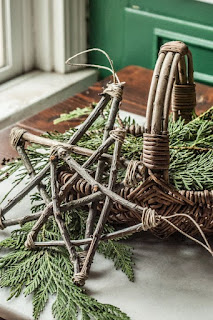The Origins Of Winter Solstice
The winter solstice is one of the most magical times of the year. It is the longest night of the year, but also when the sun returns and lights our way through the winter darkness.
The word solstice means “sun stand still”. Unlike the hectic, commercial, and consumer-driven holiday season of our modern world, the Winter Solstice was traditionally recognized as a time of stillness, peace, and rest, as well as rebirth and renewal.
Every December, usually between the 20th and the 23rd of the month, our ancestors honored the return of the sun, taking comfort knowing that the longest night would now be behind them, and the days would grow even longer in the months to come.
The Winter Solstice is also the time of year when the “magical child” of many spiritual traditions is born (or reborn) into the world, bringing with him the return of light and hope. The Greeks celebrated the birth of Attis, consort of the great mother goddess Cybele. The early Romans celebrated the birth of the sun god Mithras. And, of course, Christians around the world continue to celebrate the birth of Jesus to this day. In all of these traditions, there are many parallels between the return of the son and the return of the sun. In fact, in the later Roman Empire, December 25th (now Christmas Day) was declared to be the birth date of Sol Invictus, the “unconquered sun”, well before it was designated as the birthday of Jesus Christ.
With all that said, it will come as no surprise that many of our modern Yule and Christmas traditions originated with the Winter Solstice celebrations of the Celts and Druids in pre-Christian Ireland and Britain.
The Celts believed that the sun stood still for a period of several days around the Winter Solstice, so they would light a solstice fire–which would later become the Yule log–to keep the darkness at bay. Fire and light are equally important to the Winter Solstice, as they both symbolize the return of the light, and the warmth of the summer to come.
To further honor the light, the Celts would decorate evergreen trees with solar symbols, such as candles, and gifts for the gods and goddesses. Other evergreens, such as holly, mistletoe, ivy, and fir boughs to make wreaths or swags, were brought indoors, both to decorate the home and to honor nature and the life force that sustains it, through the harsh winter months.
Ancient witches used evergreens to ward off death and destruction. They also symbolized life, rebirth, and renewal.
These plants’ green never dulls. That is why they were thought to have power over death and could ward off death, even in the depths of winter.
The red berries of the holly bush symbolized life (and later, Christ’s blood) and offered protection against evil spirits. The Druids would twist holly sprigs into crowns to wear for good luck. In addition, the Celts honored a powerful nature spirit called the Holly King, who is connected to the Green Man, the gods Gwyn, Cernunnos and Herne, as well as the Green Knight of Arthurian legend. The Celts believed that the Holly King ruled winter and the dark half of the year, helping to kindle the heat and fire of the earth, and keeping the life force flowing and strong through this cold and dark time.
The deities that are typically thought of and worked with are the Holly King and The Oak King. Two deities that fight for supremacy throughout the year. The Oak King is defeated at the summer solstice, and then The Holly King is defeated around Yule.

In Finland, the witch goddess Louhi kidnaps the sun and moon during the winter. She holds them captive inside of a mountain, causing the long cold and darkness of the season.
The Greek goddess Alcyone nests every winter for two weeks. While she nests, the usually wild sea calms down.
Every culture has myths of their deities during the Winter Solstice. Tonantzin in Mexico, Horus in Egypt, the Spider Grandmother for the Hopi, and Amaterasu for Japan.
This season is also connected to Demeter’s mourning for her daughter Persephone as she lives in Hades for half of the year, the Wild Hunt, and many stories of birth, life, death, and then rebirth.
- Gaia
- Diana
- Isis
- Demeter
- Päivätär
- Mabon
- The Sun God
- The Oak King
- The Holly King
- The Green Man
- Saturn
- Sol Invictus
- Odin
- Lugh
- Apollo
- Ra
- Freya
- Red (Represents the Holly King, who is giving his power to the Oak King)
- Green (Represents the Oak King, who will rule in the Holly King’s absence))
- White (Purity and hope for the new year)
- Silver (Represents the moon and moon deities. Silver also represents The Lady Sun in Finnish paganism, who spins silver yarns and makes silver clothes from them)
- Gold (Represents the sun and sun deities)
Crystals for Yule/The Winter Solstice:
One traditional stone of Yule is the ruby. This is a stone that protects us and draws in passion and prosperity.
Another is the garnet, which has the energy of flames. It is creative energy for visualizing a new and better life in the coming year.













Comments
Post a Comment